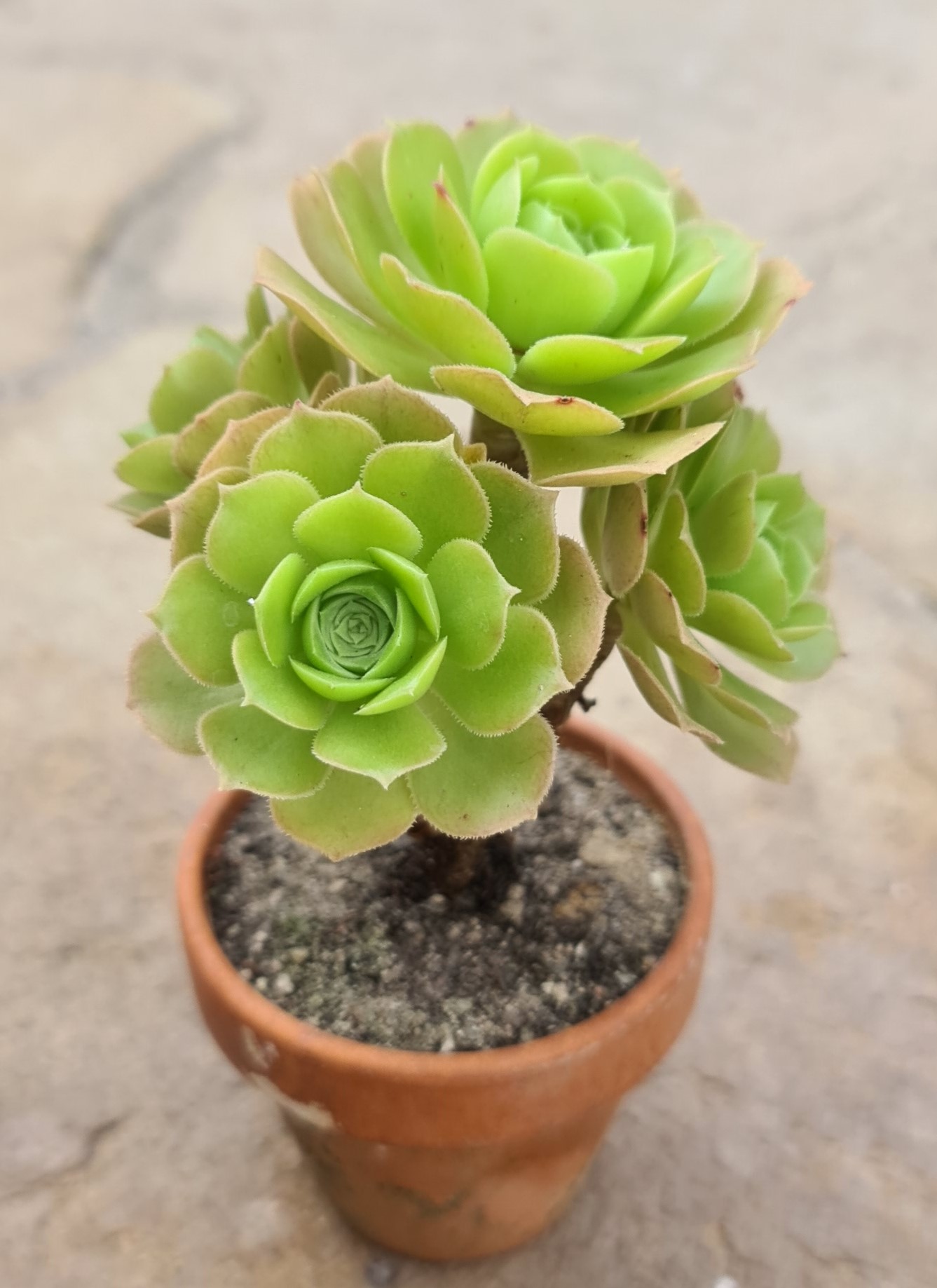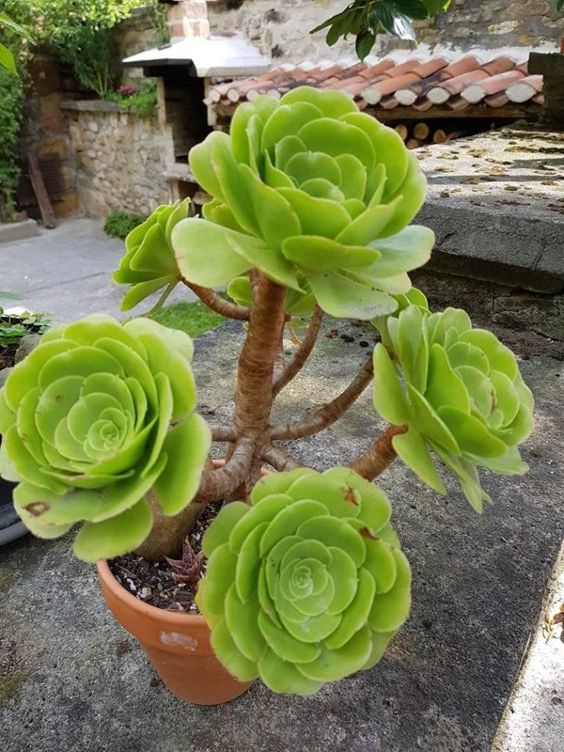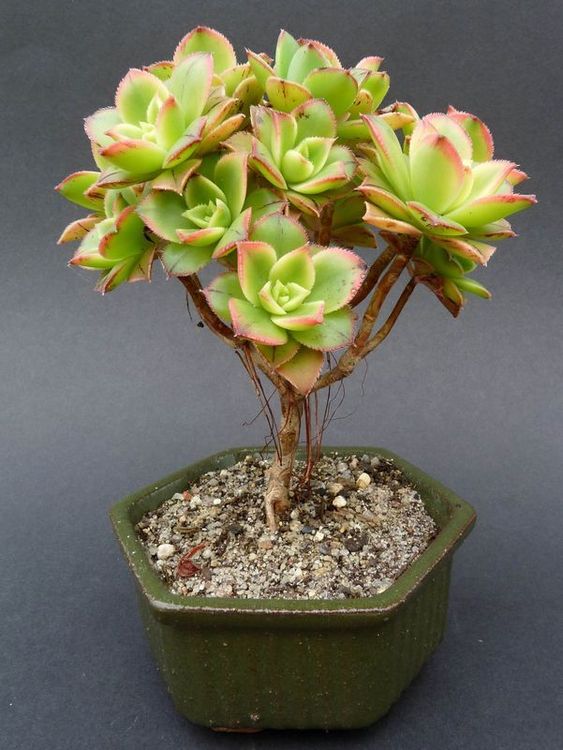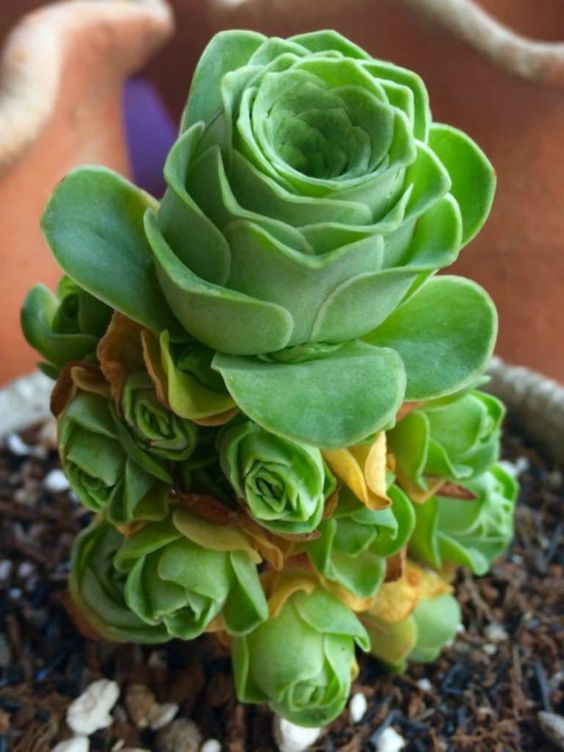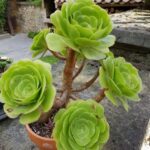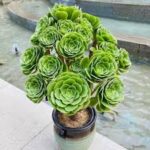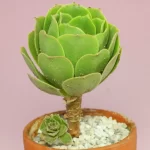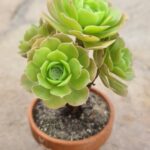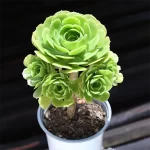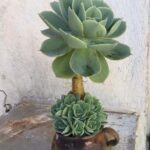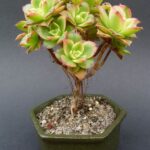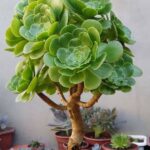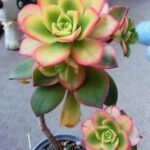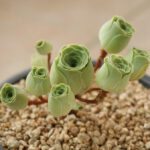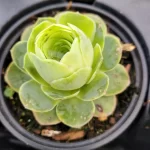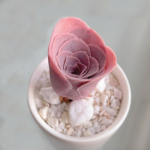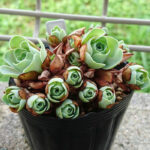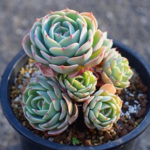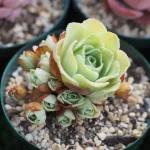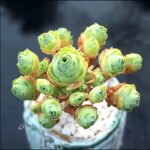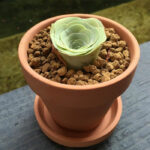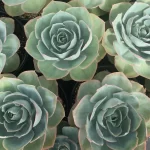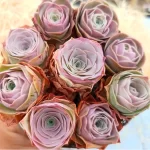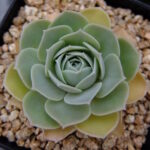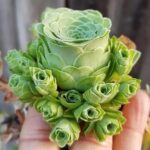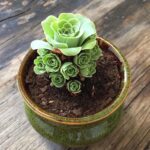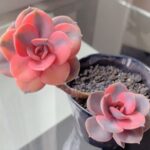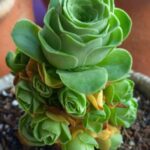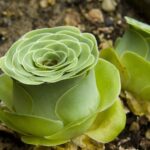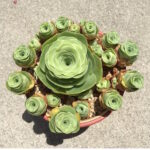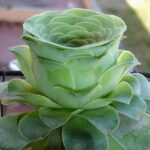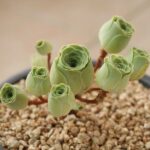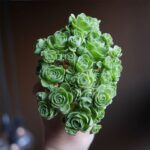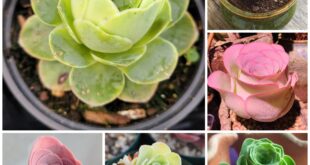Aeonium is a genus of about 35 succulents characterized by their unusually shiny, waxy leaves arranged in rosettes. The species, also called tree houseleeks, range from the low-growing A. tabuliforme and A. smithii, which grow only a few inches tall, to larger species that grow several feet tall, such as A. arboreum, A. valverdense and A. holochrysum.
The rounded leaves of the rosette structures are so perfect that these succulents are sometimes mistaken for artificial plants. These distinctive rosettes can be solid or variegated in white, yellow, red and green. Small, star-shaped flowers grow in clusters from the center of the rosettes but are not particularly showy.
Aeoniums can be planted at any time in the garden or indoors. These are rather slow growing plants and can take up to five years to produce the small clusters of flowers from the center of the rosettes. Most aeoniums are monocarpic, meaning that the mother plant dies after flowering, but the young plants (shoots) continue to produce more shoots.
Aeonium care
In warmer climates, aeoniums can be grown in the ground as perennials, but it is also common to grow them as potted plants on decks or patios. In colder regions, they should be grown in containers and brought indoors before the first frost of the season. When growing in the garden, aeoniums attract the most attention when grouped in masses. Taller varieties such as Aeonium undulatum and Aeonium smithii can look like bonsai when they become shrubby; You can shorten them if they get too long. The cuttings root easily and form new plants, allowing you to fill out your planting area even further.
Because they store their water in their leaves and stems, aeoniums have a shallow root system and prefer moist, but not wet or waterlogged, soil. They can grow roots along their stems, which you may notice if the plant is tied to the pot or the stems fall down and touch the ground. Be careful not to let these roots dry out – the stem roots will quickly transform the fallen pieces into new plants. Long-legged branches tend to fall over and break due to the weight of the rosettes. If this happens, simply replant the broken stem and wait for it to take root again.
Light
Like most succulents, Aeonium plants do best in full or partial sunlight. In hot summers and desert conditions, light shade may be necessary, especially during the hotter afternoon hours. If you are growing the plant indoors, place it in a window that receives bright, indirect light for at least six to eight hours a day. If you start to notice white or brown spots on the tips of the leaves, that’s a good sign that your Aeonium plants are getting too much direct light and should be relocated.
Floor
Whether you’re growing your succulents indoors or outdoors, you should try planting them in sandy loam or a regular potting mix fortified with perlite. Avoid putting them in a mix intended for succulents and cacti, as aeoniums require more moisture than this combination typically provides. If you want to grow your Aeonium plants in a traditional garden bed with dense soil, consider supplementing the mix with peat moss to improve porosity.
Water
When planted outdoors, Aeonium plants should get all the water they need from rainfall. Indoors, you should allow the soil to dry out at least 1 to 2 inches before soaking it at the base of the plant. When grown outdoors, the plant typically goes dormant during mid-summer and winter. During this time, you can significantly limit watering and only provide moisture when you notice the leaves begin to shrink. Although these plants like more moisture than many other succulents, too much moisture or leaving them in soggy soil will cause root rot.
Temperature and humidity
These plants prefer a Mediterranean climate – not too hot, not too cold and not too dry. Most Aeonium varieties are only hardy in USDA zones 9 through 11, meaning they are grown primarily indoors in many locations. Growing aeoniums in moist and shady soil ensures that they will grow even in high heat. However, their actual growing season is late winter to spring, when temperatures are cool (19 to 24 degrees Celsius) and humid.
 TopsDecor.com Home Decor Ideas
TopsDecor.com Home Decor Ideas
